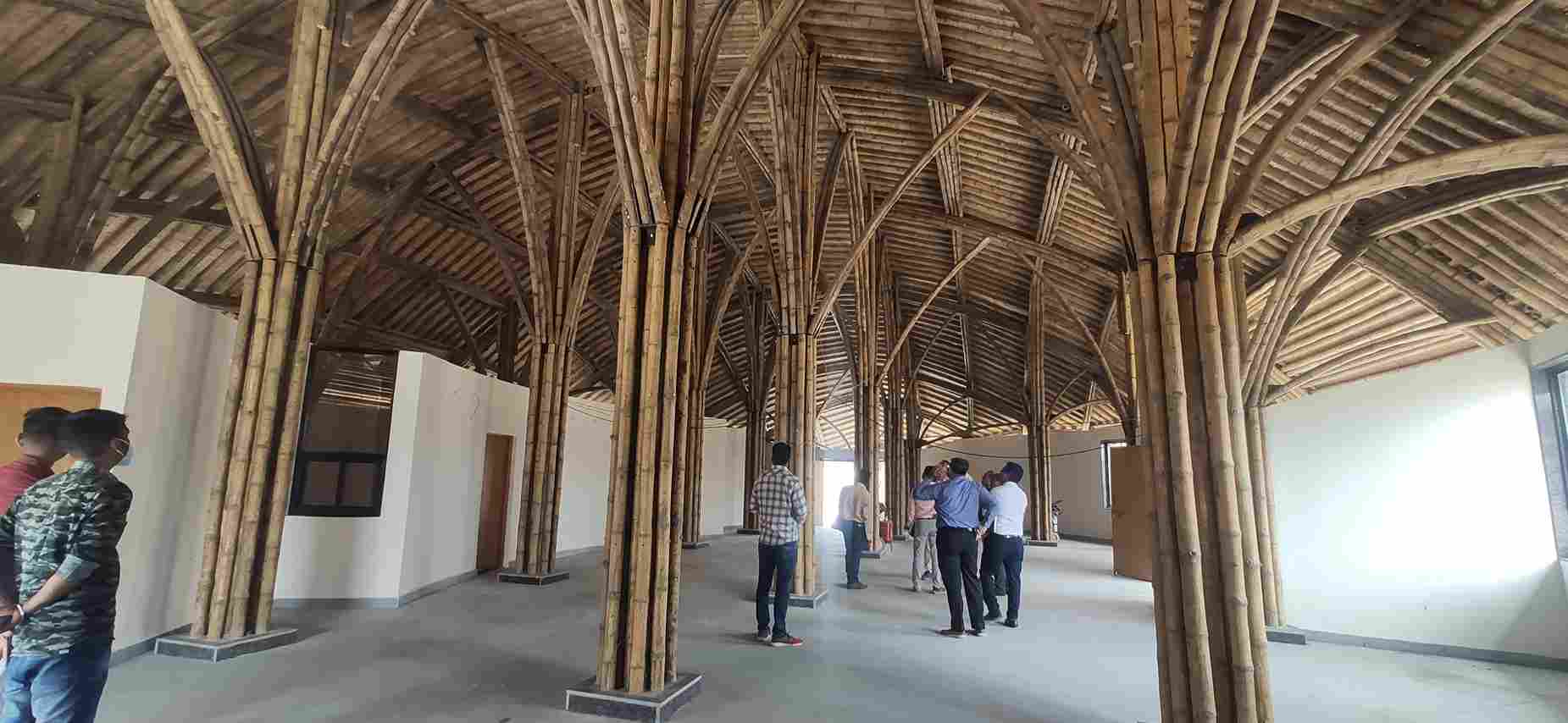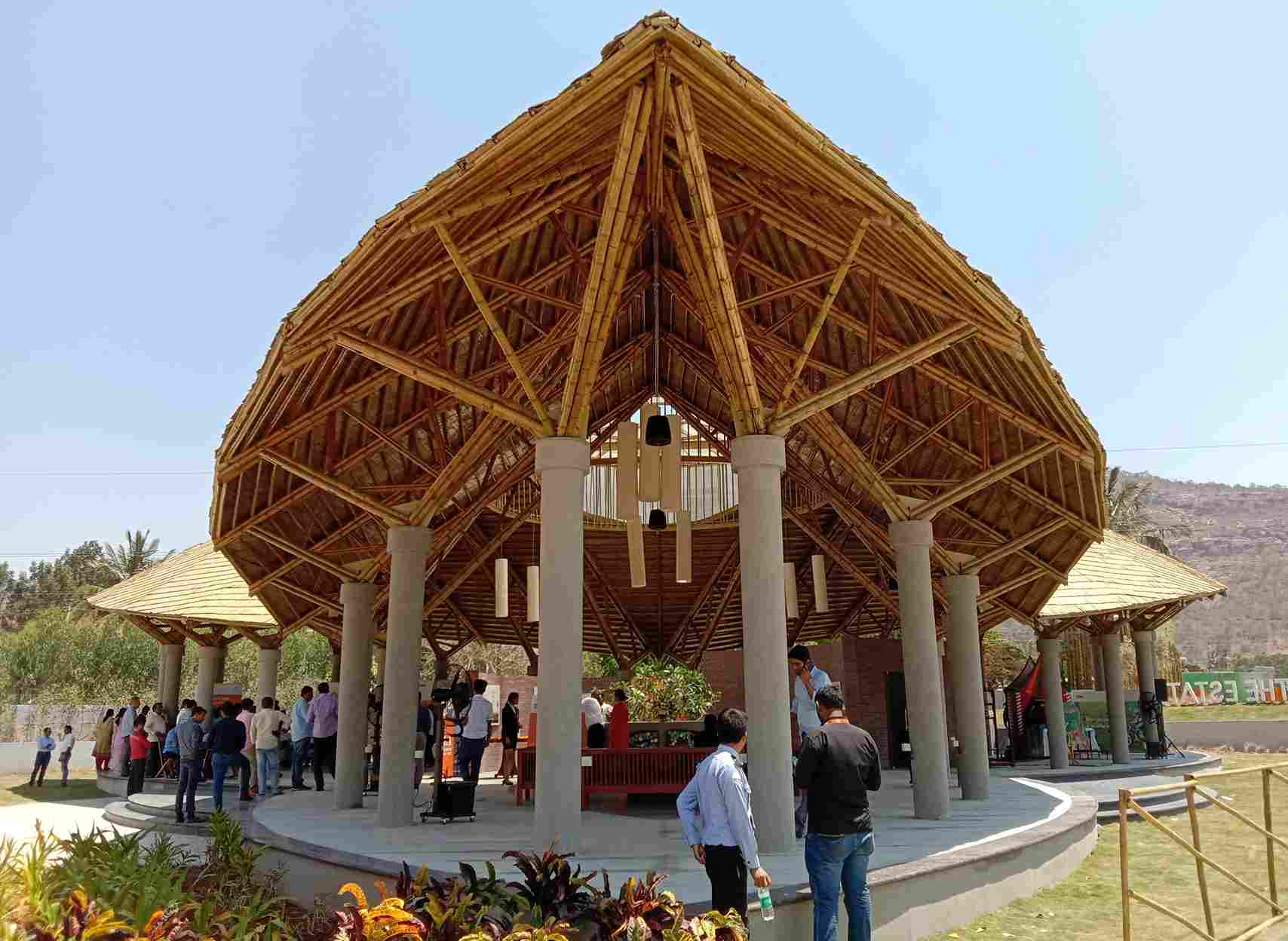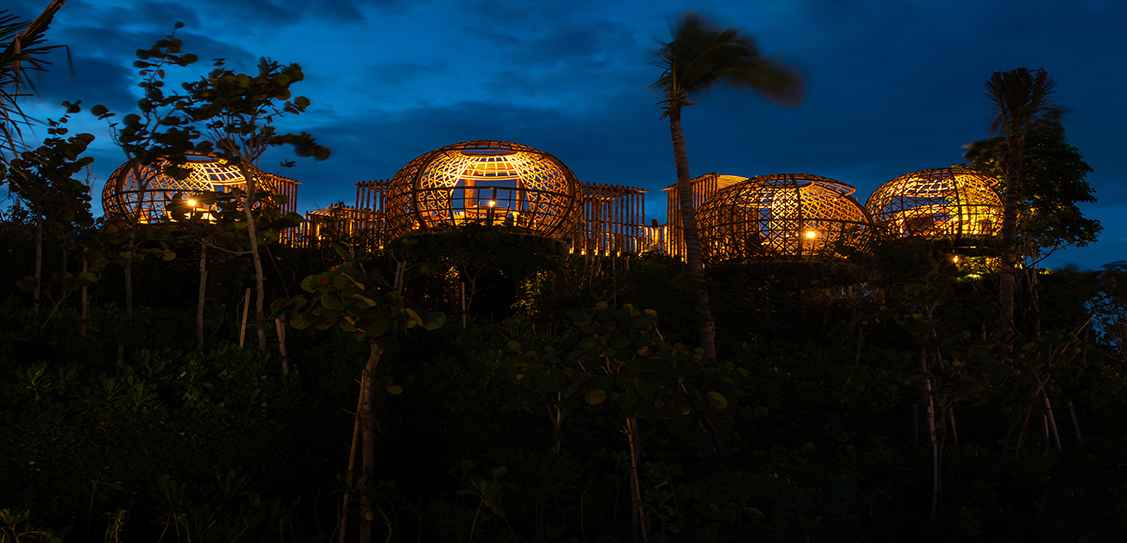The excitement surrounding the 2022 FIFA World Cup is rife and fans virtually the world can’t wait for the games to begin. But this year, Indians have a reason to stand proud as the World Cup kicks off.
Set to embark on 20 November in Qatar, the sporting event is a step towards sustainability. The main players will be housed in villas spaced together under a 34,500 sq ft bamboo false ceiling.
And the brains overdue bringing bamboo to trendy construction is Sanjeev Karpe — an electrical engineer by profession who shares how the unobtrusive plant became a stalwart in his career trajectory and why he thinks sustainability is so vital to the planet.

Borrowing inspiration from the world
The year was 2003. Sanjeev Karpe was engaged in doing contracts for the railways in Kudal in the Sindhudurg district of Maharashtra where he lived.
It was then that he had an opportunity to visit China and observe the prevalence of bamboo in construction there. During his visit, he noticed exotic modern bamboo buildings, and how the plant’s tensile strength made it a unconfined contender in the housing industry.
Inspired by this, Karpe returned to India and in 2004, started his venture Konkan Bamboo and Cane Development Centre – KONBAC.
The not-for-profit visitor had one aim in mind, which was to diamond as well as self-mastery the prototyping and production of premium bamboo products for Indian and international markets.
But there was one nagging thought at the when of Karpe’s mind which was centred virtually bamboo growing and production – a circular economy in itself.

Partnering with farmers and artisans
“In India, the bamboo that is used for manufacturing items is usually from the plants that grow in the forest,” he says, subtracting that he wanted to motivate farmers in Kudal, Sindhudurg to grow it indigenously.
The right way to go well-nigh this, he thought, would be to highlight the benefits of the crop.
“We started educating farmers well-nigh the immense possibilities that the bamboo yield offered, explained how it is largest compared to other crops due to its hardiness and worthiness to survive erratic weather changes,” he adds.
Slowly, farmers in the region began understanding the importance of the yield and growing it in their fields. Karpe adds that in 2004 vacated they managed to convince 120 farmers to join the bamboo wagon, and today, this number has grown to 10,000 farmers.
One of these, Sameer Sawant who has been engaged in growing bamboo on his 25-acre sublet in Kudal and supplying it to KONBAC, says, “We were never enlightened of the potential of this plant, and would often focus on rice as our mazuma crop.”
However, he adds that with KONBAC reaching out to them and motivating them to grow the plant, they began realising that the demand in the markets was very upper for this.
“Bamboo is an easy yield to grow as it only needs to be planted during the monsoon and then three years later you will see the plant shoot up. We do not use any fertilisers and stick to organic methods of farming.” He adds that they have seen their profits increase without partnering with KONBAC.

“We get a good price when we supply bamboo to KONBAC. If we sell a piece of bamboo in the mainstream markets, we get Rs 70 per piece, whereas at KONBAC we get Rs 130,” says Sameer.
The next step was to engage artisans and have them make products using bamboo, creating furniture and crafts that could then be sold in the markets.
“We are working with artisans from variegated parts, hailing from nine states, including Chhatisgarh, Odisha, Maharashtra, etc,” says Karpe, subtracting that the focus is to convert trade knowledge into trendy products and create a culture wherein these bamboo materials will be misogynist wideness the country.
One of the artisans Eknath Gavandi who is closely associated with making bamboo products for KONBAC, says he has learnt so much. “I was a carpenter surpassing this and would work with wood. Every day would be very much the same, as there are machines for wood and the requirements remain the same. However, with bamboo, every day is heady and a new challenge. Bamboo is fun to work with, as the majority of the work has to be washed-up manually.”
But while towers a trademark here in India has been Karpe’s focus, he has moreover set his sights abroad. This is reflected in two key projects that he has come up with, a floating restaurant in the Maldives and the FIFA project in Qatar.
Two milestone projects
Explaining how he got this big break, Karpe says in 2016, he decided to expand his horizons and target countries outside India to widen the telescopic of bamboo.

Along with Krunal Negandhi, a friend and moreover the throne of the environmental department of the Lavasa project, he founded Jans Bamboo Products Pvt Ltd, a venture that would focus on creating customised bamboo structures and constructions.
The duo participated in a successful global tender that year, and so they got started on a dining project in the Maldives, featuring ‘floating dining pods’ for luxury trademark Waldorf Astoria.
Initially, Karpe says, the project was designed by an technie from Dubai, and the idea was to have the skeleton made of metal with bamboo stuff used as the filler item.
“We tried inveigling the vendee that we could have the unshortened project made with bamboo. Though the vendee loved the idea, we were told we would have to come up with the diamond ourselves and execute it to the finish,” says Karpe. And they managed to succeed this!
“Picture a restaurant right in the middle of the sea, facing high-pressure winds and rains. But plane in the squatter of storms, the bamboo holds strong and is built to survive the harsh winds. The project was rated as among the World’s Top 16 Waterfront Restaurants by CNN UK,” says Karpe.
This was the whence of a new journey for him, as he started getting international recognition for his ideation and work.
“In the years pursuit the Maldives project, we participated in flipside tender for the FIFA World Cup, where the main players would stay. We finger elated to be working on such an integral speciality of the world’s largest sporting event,” he adds.
Elaborating on how they are going well-nigh the project, Karpe says the panels for the ceiling of the towers are stuff put together in the manufacturing unit in Kudal, where they have factories on a 10-acre land. These panels are then transferred to Qatar where the installation will take place.
A unique full-length of the project is the bamboo they are using.
In India, usually large-sized bamboo is used for construction, but for the project, Karpe and his team are procuring small diameter bamboo that is less than 1-inch diameter.
The project that commenced two months ago in August is set to be completed in October within a upkeep of Rs 5 crores and a team of 28 people in the execution team.
But as Karpe says, it has taken a lot to get to this stage.
A mentality that he has struggled with has been the thought process of Indians well-nigh bamboo.
“Indians usually think bamboo is a material for the poor. That is what we wish to change.”
He adds that it is the world’s weightier sustainable material and absorbs increasingly stat dioxide than any other tree. Along with this, it is the only material that emits oxygen during its production.
“We have faced a lot of resistance in India for bamboo constructions, but the projects that we are undertaking are helping us unravel these barriers,” says Karpe.
Edited by Yoshita Rao
